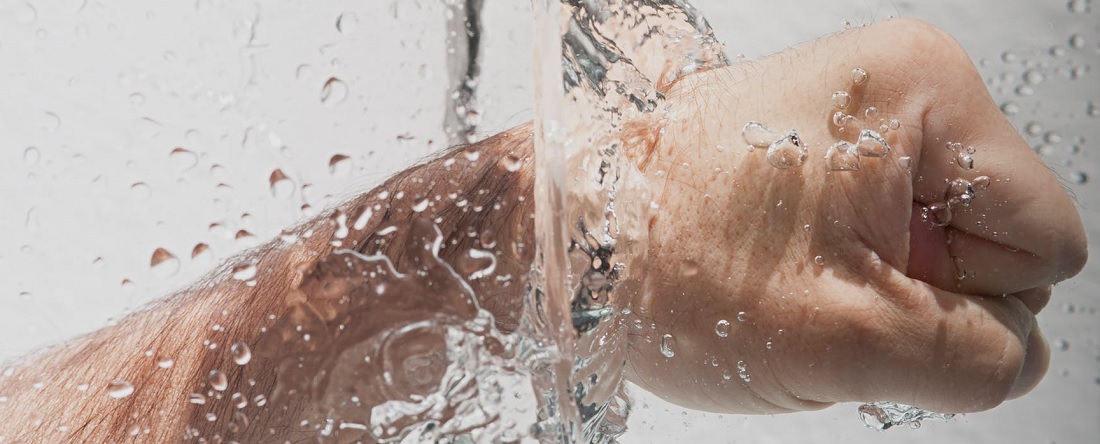MALE YEAST INFECTION (PENILE YEAST INFECTION) – SYMPTOMS, CAUSES, AND MALE YEAST INFECTION TREATMENT
Yeast infections are often thought of as a female health problem, but men aren’t safe from these infections, either.
Yeast infections, or candidiasis, can affect other areas of the body:
- A yeast infection of the mouth is called thrush, or oral candidiasis.
- Infection of the skin (such as the armpits and groin) is called cutaneous candidiasis.
- The Same infection of the penis – which is inflammation of the head of the penis – is also called candidal (or candida) balanitis, or balanitis thrush.
- Common fungal infections of the foot are foot fungus, toenail fungus, toe infection.
In this article we focus on yeast infection in men – a penile yeast infection, which may be a result of unprotected sex with a partner who has a vaginal yeast infection or also inadequate hygiene. Symptoms include redness on the skin and itchiness or burning.
With proper treatment, yeast infections mostly go within a few days. But not all the time and if so, the complications can be serious, even life-threatening.

Penile Yeast Infection Signs And Symptoms
Men usually don’t experience yeast infection symptoms like women. However, once symptoms emerge, they may cause ultimate pain and discomfort. Symptoms may mimic other diseases, including some sexually-transmitted infections (STDs), so don’t ignore those symptoms once they appear.
To discover the reasons for the symptoms, men should always visit a urologist or primary care doctor who can diagnose the condition.
Symptoms of yeast infections in men include:
- Discomfort and burning (dysuria) during urination
- Itching or a burning sensation on the penis
- Moist skin on the penis, possibly with areas of a thick, white substance collecting in skin folds
- Sores on the foreskin of the penis
- Irritation, itchiness, and pain at the tip of the penis
- White, lumpy, foul-smelling discharge
- Discomfort during sexual intercourse
- Redness and inflammation at the top of the penis
- Small rash-like bumps that may contain pus
- Areas of white, shiny skin at the top of the penis

Penile Yeast Infection Causes
The fungus that causes yeast infections (candida) is normally present on the body and skin. It is an everyday resident of even in the healthiest bodies. Therefore yeast infections in men are very common.
Candida loves moist, warm, and dark places, especially the genital area and gastrointestinal tract. The most common species is Candida albicans.
Candida normally lives innocently in these loved warm and moist places in your body and your microbiota keeps it from taking over (Lactobacillus bacteria keeps its growth in check). However, if there’s an imbalance in your microbiota (for example you suffer from dysbiosis) or you have had sex with an infected partner, candida can start to overgrow. And moist conditions are perfect for candida to spread.
Candida albicans overgrowth can affect both – men, as well as women.
Yeast infection is not a sexually-transmitted disease (STD). However, an infected woman may spread it to her male sex partner. Therefore, one of the most usual causes of a penile yeast infection is unprotected sex with a woman with candida overgrowth.
However, men can also develop yeast infections without being sexually active.

Common Causes and Potential Risk Factors For Male Yeast Infections Include:
- Antibiotic use, which lower probiotic counts, allowing for the growth of candida
- Weakened immune systems due to illness and chronic health conditions, which allows candida to spread. If you have an impaired immune system because of cancer treatment, HIV, or another reason, you may also be at a higher risk of a yeast infection.
- Frequent sexual intercourse
- Poor hygiene
- Being uncircumcised
- Having diabetes, as men with diabetes have a higher amount of sugar in their urine, which may promote the growth of yeasts
- Using soaps and skin products that irritate the skin
- Wearing tight-fitting undergarments or wet clothing
- Condoms that contain lubricants
- Using spermicides
- Any exposure to hot, humid environments
- Being overweight

Penile Yeast Infection Treatment
In rare cases, mild yeast infections do not need treatment and the medicaments are not necessary unless the man develops symptoms. Even when left untreated, it might go away by itself. However, the yeast infection can sometimes spread to the scrotum, inner thighs, and buttocks. Even more, serious penile yeast infection, if not treated, may lead to a wide scale of painful, uncomfortable, and potentially embarrassing symptoms. Also, severe infection can lead to dreadful complications if it spreads into the bloodstream.
Fortunately, treatment for men with antifungal medications is simple. These medications come in topical (applied as cream) and oral form (in pill or tablet form).
Usually, those medications are on sale as OTC medications (it means you don`t need a prescription), and when used twice a day for about one to three weeks is mostly sufficient to cure the yeast infection.
However, men who suffer from yeast infection for the first time, and have not received treatment before – should not self-medicate themselves with OTC anti-fungal medications and should see a doctor.
From time to time yeast infections come back after they seem to be cured. If this happens, your doctor will probably suggest weekly treatments for several months. More severe, or longer-term yeast may need prescription medicine.
If your yeast infection doesn’t respond to treatment and you are not uncircumcised, your doctor may suggest you have a circumcision. This surgical procedure is commonly done on infants, however, it can be done safely on a man at any age.

The Antifungal Creams or Oral Medications Recommended For Male Yeast Infection Include:
- Miconazole (Lotrimin AF, Cruex, Desenex, Ting Antifungal)
- Imidazole (Canesten, Selezen)
- Clotrimazole (Lotrimin AF, Anti-Fungal, Cruex, Desenex, Lotrimin AF Ringworm)
- Oral Fluconazole (Diflucan) and a Hydrocortisone Cream may be advised in serious infections, for example for those who have developed a potentially serious condition called balanitis.
Usually, people tolerate most antifungal creams well. You’re not likely to have any serious side effects. However, ask your doctor and pharmacist what to look out for in case you have a bad reaction.
Other Treatment Methods Recommended For Male Yeast Infection Include:
- Along with using the medicated cream, you should also practice good hygiene which can help prevent yeast infections and even treat them. It is a good idea to wash the penis regularly with plain warm water, avoid shower gels and soaps, and dry well after.
- Men should never use perfumed shower gels or soaps on their genitals.
- Wearing loose-fitting cotton underwear or boxers and keeping genitals dry and cool at all times can also prevent yeast growth.
- Although various herbal remedies have been touted for women with yeast infections, there’s no data on their efficacy (or lack thereof) in men. But, there is no harm in trying.
- If you have diabetes, work with your healthcare providers to make sure your blood sugar levels are well controlled.
- If you have a suppressed immune system, your doctor can recommend ways to help keep your immune system as healthy as possible. But there is also something you can do for the health of your immune system right now. This includes healthy food, enough physical activity, no stress, and taking probiotics and vitamins like Vitamin D.
When men have got the infection because of unprotected sexual intercourse, both partners should receive treatment so they would not re-infect each other. There’s no reason to limit or avoid sex during treatment, however, you should use a condom.

Penile Yeast Infection Complications
Penile yeast infection may lead to balanitis, which is an inflammation of the head or the foreskin of the penis. According to one report in the journal Clinical Microbiology Reviews, candida yeasts are blameworthy for up to 35 % of all the cases of balanitis.
Complications include:
- Untreated balanitis may lead to scarring of the foreskin.
- It can also cause adhesions on the penis. The condition can be painful and make urinating more difficult.
- If untreated, balanitis can cause swollen and painful glands, as well as weakness and fatigue.
- A yeast infection may enter the bloodstream (known as candidemia or invasive candidiasis). This is most common in men with weakened immune systems or who wait to receive treatment until the infection has spread beyond the penis.
- If you’ve been in a hospital and used a catheter to urinate, you may be more likely to face invasive candidiasis. This advanced form of yeast infection is very serious. The treatment may include oral antifungal medications for several weeks. In some cases, the drugs are administered intravenously.
- Immunocompromised patients or patients who have undergone an invasive procedure (e.g., placement of a central venous line) with contaminated equipment may develop severe, even life-threatening yeast infections.
You May Be More Likely To Develop Balanitis From A Yeast Infection If You:
- Are uncircumcised
- Use antibiotics for prolonged periods
- Have diabetes
- Have an impaired immune system, such as with HIV
- Are overweight
- Practice poor hygiene

Penile Yeast Infection Prevention
You can help prevent a penile yeast infection by avoiding unprotected sexual contact with a partner who has a yeast infection. Also, keep away from unprotected sex with anyone while you have a yeast infection. Because you could give the infection back to your partner, and the two of you could swap it back and forth.
To avoid getting a yeast infection or passing one along, do the following:
- Wear a condom to help reduce your chances of developing a yeast infection.
- Practice sexual monogamy to reduce your risk for a yeast infection.
- Practice good hygiene, and keep your penis and genitals clean and dry.
- If you are uncircumcised, clean under the foreskin with soap and water, and return your foreskin to its usual position after you have sexual intercourse.
- Practice a healthy lifestyle and keep your immune system strong. That includes a nutritious diet full of probiotics and vitamins like Vitamin D.
NB! The information provided here is for informational purposes only, so do not consider it as health care or medical diagnosis and treatment. Do not consider this information as a guarantee of the results you want to achieve. In addition, this information does not replace the advice of your physician or other healthcare professional.
Even more, you should not use it to diagnose or treat a health problem. Before changing or discontinuing your existing medication, treatment, or care, or taking any dietary supplements, be sure to consult with your healthcare professional or doctor before starting any diet or program, or if you suspect you may have a medical condition.
Written by Maria-Helena Loik
This article was originally posted on Ecosh.com
Sources:
Photos: Pexels.com, Pixabay.com
